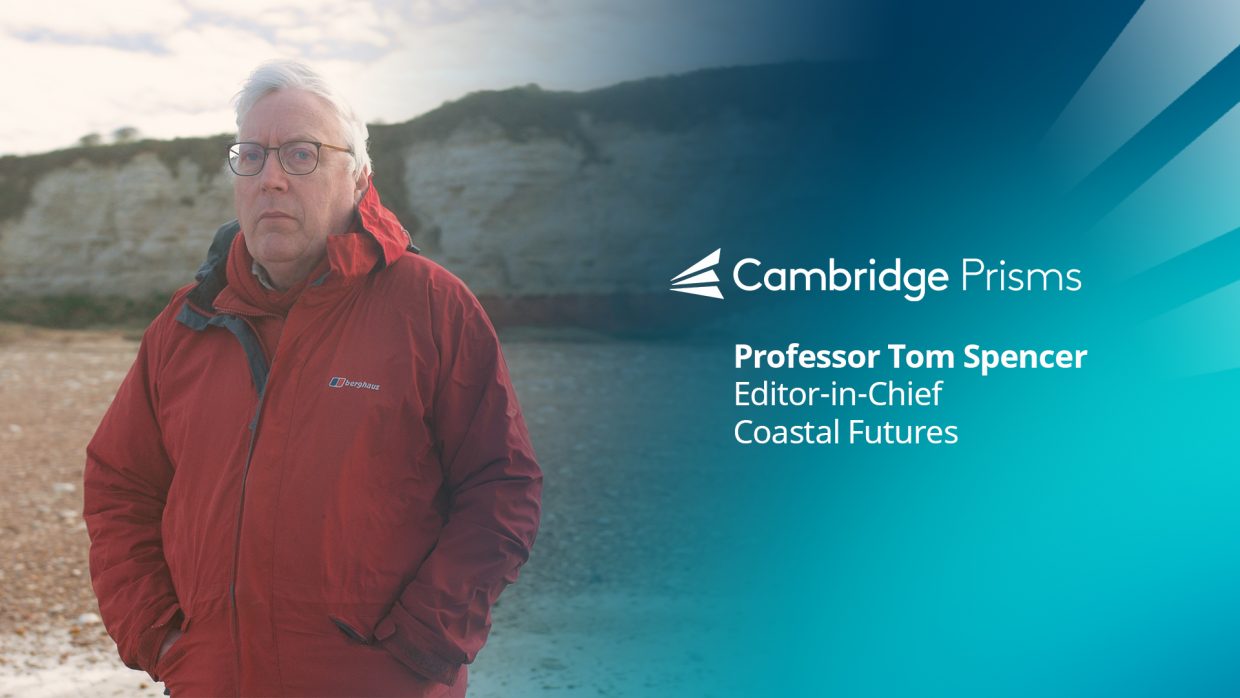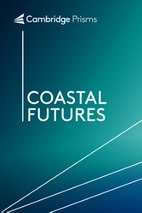Embracing a sea change
Emeritus Professor Tom Spencer, Editor-in-Chief of Cambridge Prisms: Coastal Futures, reflects on the influence of ‘wonderful’ teachers and the need to understand a plethora of viewpoints in relation to our coastlines

The window for meaningful action relating to the world’s coastlines is closing fast, but Tom Spencer remains ‘guardedly optimistic’ that there is still time for societies and communities to come up with sustainable strategies for those that live and work at the coast.
The urbanisation of coasts, the modification of land surfaces by agriculture, deforestation and river regulation, the acceleration of coastal subsidence from the extraction of groundwater and hydrocarbons – as well as climate change and accelerated sea-level rises – are all combining to impact the future of our coastlines. The great cities by the sea will continue to be protected but some coasts and communities will be lost; for the ‘in between’ settlements there will be a need to learn to recognise, and adapt to, the shifting position of the shoreline.
Education, estuaries and ecology
Tom was born in Plymouth, Devon, and was brought up amid the rocky coasts of the West Country by parents who were keen dinghy sailors and fans of coastal walks and beach holidays. After a family move across the country to the muddy estuaries of Essex, Tom’s curiosity was focussed by some ‘wonderful’ school teachers who brought his A-level classes to life through a mixture of lessons in the field, old-style lectures, and a more analytical, quantitative approach to problem-solving that came to be known as ‘the new geography’.
By the time Tom arrived in Cambridge in the 1970s for his undergraduate studies, he reports that he was set on ‘this geography-geology-ecology nexus’, a passion that was further driven by his Director of Studies Dr David Stoddart with his ‘chaotic office, coral specimens, carvings of tiki and turtles and a bust of Charles Darwin’. Tom quickly realised: “The magical world of the Tropics was out there, way beyond my Euro-centric experience and waiting to be explored – which I have been doing ever since.”
Interest in coastal futures is not a new thing – Tom recalls in 1980 a US Senate Committee on Energy and Natural Resources hearing, which described the potential effects of carbon dioxide build-up in the atmosphere, including maps of how US coastal cities would be affected by a rise in sea level of up to 25 feet. Never slow to sensationalise a story, the media got in on the act over the next few years – with Tom’s local newspaper predicting a ‘costa del Cambridge’ complete with an artist’s impression of the city’s famous Kings’ College surrounded by white sands and deck chairs.
Beyond the point of tinkering
There is still much uncertainty around the exact nature of near-future marine climates and the degree to which the global community can stabilise future climate change, and hence sea-level rise. But Tom is clear that we are “beyond the point of tinkering with management interventions” and that the goal of achieving sustainability should be “replaced by a strategy of eliminating manifestly unsustainable practices”.
He says: “This is not just semantics. It is up to us as coastal knowledge brokers to provide the underpinning principles that identify coast-changing actions as being unsustainable, and to supply better-informed future pathways away from such actions.”

Indeed, it was his position as a top-level knowledge broker, as Professor of Coastal Dynamics and Director of the Cambridge Coastal Research Unit, that led to his appointment as Editor-in-Chief at Cambridge Prisms: Coastal Futures – an offer he was “seriously chuffed” to receive.
He says: “It is not often that you get the chance to be in at the start of a new journal with a pretty clean slate to work on – and it has been a joy. We have a brilliant team of Senior Editors and Editors, backed up by a highly professional and committed team at Cambridge University Press. As a team, we are working hard at engaging with diversity, equality and inclusion issues within the coastal research community. We are committed to encouraging ‘rising young stars’ to publish in the journal and get editorial experience. Giving voice to researchers in developing countries, a very challenging action, is high on our radar.”
The interdisciplinary nature of the journal, along with the vast range of topics covered and a variety of global viewpoints, is key to Tom: “We know that coastal systems are particularly vulnerable to the effects of global environmental change as their dynamics have been, and are being, compromised by anthropogenic pressures. However, rather than ‘natural systems that are disturbed by humans’ – why are ‘human impacts’ often the last, added on chapter in coastal texts? – we believe that a new storyline has emerged, one of ‘human systems that are entwined with natural systems’.”
“This view calls for the incorporation of indigenous knowledge and values into coastal adaptation strategies and, more broadly, looks to the role and juxtaposition of the arts and humanities with the natural sciences. Fundamentally, of course, there is a need to address the socio-spatial injustices associated with climate change from being realised. We are very open to papers that explore coasts from this viewpoint.”
Embracing the wisdom of youth
Despite the huge challenges ahead, Tom remains guardedly optimistic that there remains enough time to affect positive change around the future of our coastlines. As a young man the inspiration of seeing Dorset’s Jurassic Coast first-hand, along with the influence of outstanding educators, paved the way for his stellar career – along with a hope that the younger generation will “be both bold and build consensus in order to hold off those economic forces that drive, both directly and indirectly, ever more environmental degradation.”
He concludes: “There is no doubt that the young get the ‘climate emergency’ and they will be the drivers for societal change – I just hope we listen to them more closely right now.”






